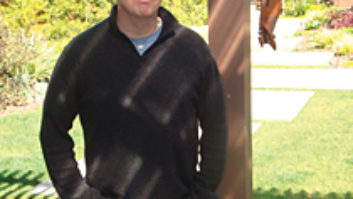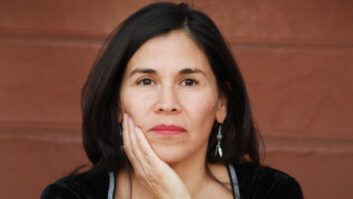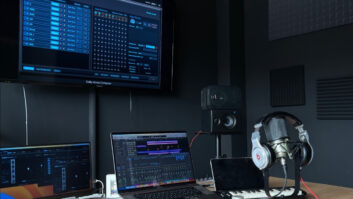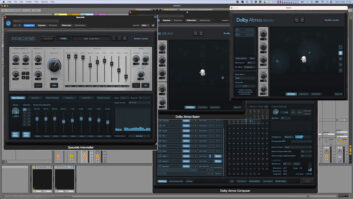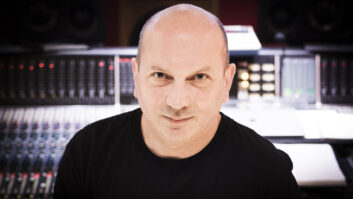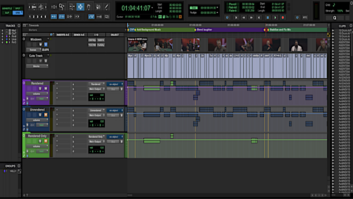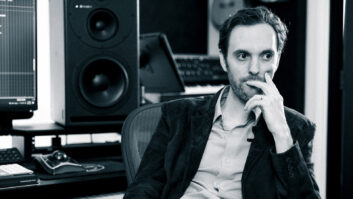Some people are just born with their calling. For television composer Sean Callery, the call just happened to come from “24,” “Homeland,” “Medium,” “Elementary,” “Bones,” “Designated Survivor,” “Jessica Jones” and many others over the years.
While his older brother was listening to Steely Dan, Elton John and Billy Joel, it was the music of John Williams in “Lost in Space” reruns, Jaws and Star Wars that captivated the younger Callery. Later he became fascinated by TV theme songs like Lalo Schifrin’s iconic opening to “Mission Impossible,” and title tracks for “The Flintstones“ and “The Jetsons.”
“The be-bop ‘Jetsons’ theme is still one of the best themes ever written,” Callery says.
Many years later, in 2017, he would win an Emmy Award for his jazz-infused theme to the Netflix Marvel Comic series “Jessica Jones.” It proved a tip of the hat to his early days playing cocktail piano music in restaurants. Callery wrote the theme by capturing the neo-noir characteristic of the show from slides, he says. “The instrumentation was drum sets and some congas and chaotic chords on the piano,” he explains.
Seated in the middle of the workstation setup at his studio in the backyard of his Los Angeles home, Callery explains that his composing process happens primarily from two stations: a Mac Pro with RME Madiface XT running Apple Logic; and a Pro Tools 2019 HD System with two HDX cards .
“I record everything, any sound that comes out of anything, whether it’s analog or something I’ve sound designed in here—any kind of specific sound gets printed discretely into a Pro Tools session so I can mix it later,” he says. “Then I assemble a show and deliver it in the form of a Pro Tools session, which will go to the mix stage.”
He most often works from the center of a cockpit-like orientation, with his primary keyboard built into the table with the Logic system and his view of the screen for scoring. To his left is the Digidesign D-Command, which operates his Pro Tools rig. To his right is his NED Synclavier, the legendary sound design workstation that helped shape his destiny.
In the Beginning
Callery began playing piano in 1969, at age five, in his birthplace of Hartford, Conn., just prior to the family move to Rhode Island. There, the “classical piano teacher down the street” taught him the basics. At the same time, Callery’s mother often took him to see movies that would challenge his young mind, get under his skin and leave an impression, such as 2001: A Space Odyssey.
Callery later would major in classical piano at the New England Conservatory, a period of his life he calls “invaluable.” Immediately following graduation, he took a job at Disney World in Orlando as the piano player for the All American College Orchestra. He then turned down a job for the Disney park in Tokyo, as he had plans to enroll in the master’s program in composition at USC. But when he attended the AES convention that year, fate intervened.
While at the show, or soon after, New England Digital, makers of the Synclavier, offered him a job in product support. Callery moved to Los Angeles at the tail end of 1987, recognizing today, “That’s where I met some composers who gave me a shot at helping them.”
Pitching in on some string arrangements for John Ferrar and Olivia Newton-John led to his first gig as a composer, a job co-writing the score with Ferrar for the 1990 Newton-John film A Mom for Christmas. But he wouldn’t work again as a composer for quite some time. Instead, he cut his post-production audio teeth as a night shift sound effects editor on the TV shows “Star Trek: Deep Space Nine” and “Star Trek Generations.” Each gig was procured through his association and affinity for the Synclavier.
‘Knowing the Synclavier was a very powerful thing because people were doing sound effects work and getting Emmys for it,” he says. “People were using it for composition because they were the first samplers that could play more than 32 voices at a time. And then it had hard disk recording, which was coming onto the scene in 1990 and 1991.”
More jobs followed as a hit man before composer Mark Snow (“The X-Files”) helped him get his first composing job on a series, “La Femme Nikita.”
Though it was “scary and exciting all at once,” Callery says he was also “so grateful to be doing it. But as anybody will tell you, starting off they’re tense sometimes because you want to please, you want to find your own voice, you want to do well for the people who hire you. So there’s a lot of insecurity that you have to understand you have. You have to just beat it back or work with it the best you can.”
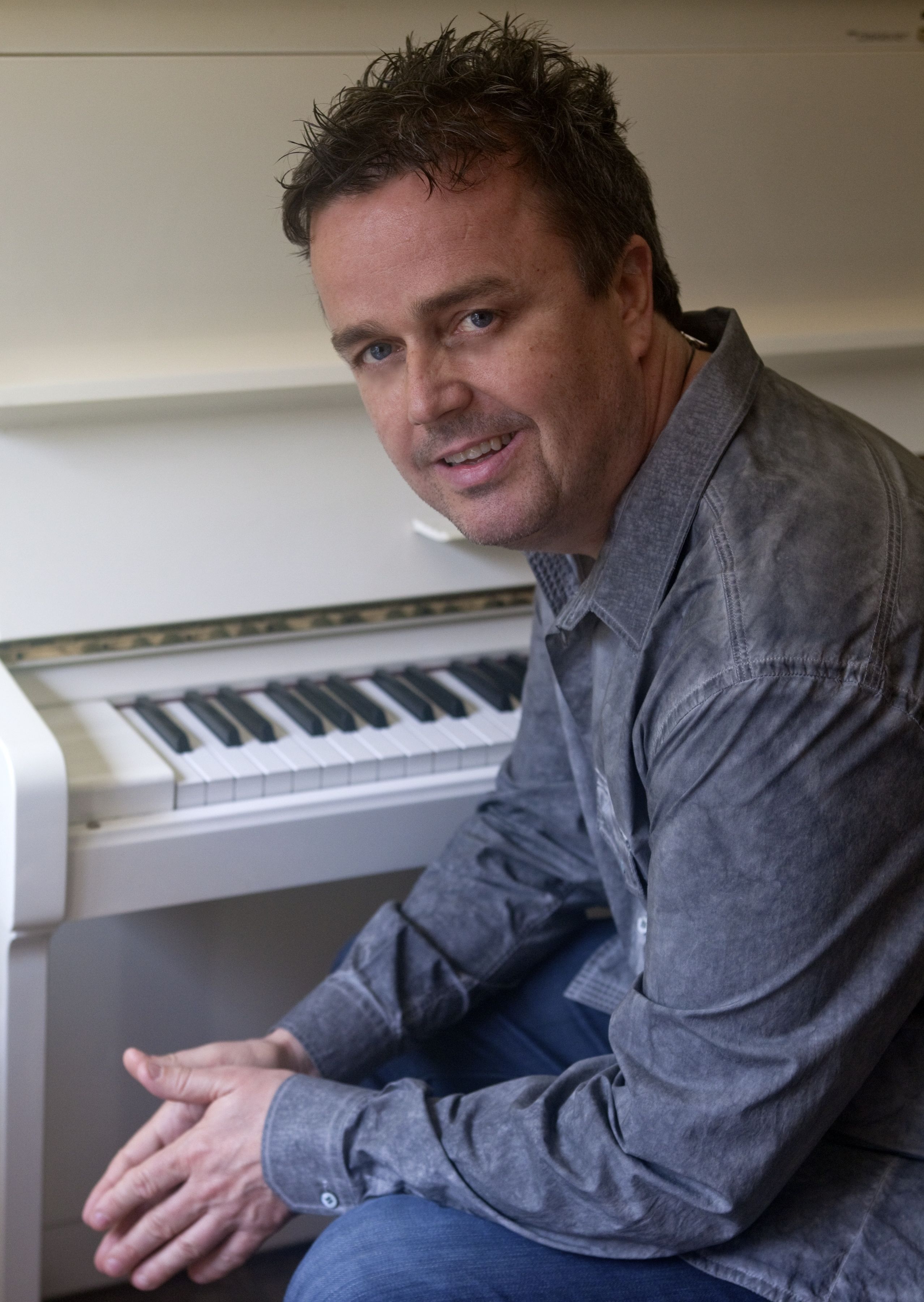
“24” and “Homeland”
It was the 2001 Fox show “24” that firmly established Callery’s career and vaulted him to first-call status. Creator Joel Surnow, with whom he had worked on “La Femme Nikita,” lobbied intensely for Callery, who was still fairly unknown at the time. Producers agreed to allow him to score the pilot.
Upon getting the script, Callery says he discovered that the Jack Bauer character (Kiefer Sutherland) was a rogue hero and commenced to write a theme for him on his Yamaha Upright Disklavier MX100A, at the side of his studio setup. “When I’m working on melodies, that’s the easiest way to go because you can just sit there and hit Record and it’s a player piano,” Callery says. “It’ll just record whatever I play into it.”
Callery got the green light to continue as composer following the pilot, and he went on to be nominated for Emmys every year he worked on the show, earning a statue for Outstanding Music Composition For a Series (Dramatic Underscore) in 2003, 2006 and 2010.
The real-time, multiple-screen format of the show provided its own specifications, and Callery says they found their mojo by the second half of the first season. He says that they continually experimented with textures that could indicate to the viewer that they were connected by time.
“This was a show where time didn’t pass,” Callery explains. “We had to experiment with designing sounds that would spill over into other scenes just to establish a psychological notion that the connecting music between scenes is actually a thread connecting time.”
One example? Callery says he designed a couple of ticky-tock sounds with low basses. “They were hybrid tick tocks,” he explains. “I didn’t want them to be so on the money that it sounded like a grandfather clock. The word I used with Joel was ‘percolating.’ These things tended to serve the show well.”
A year after “24” ended in 2010, Callery was still working on “Medium,” which he had begun in 2005, and “Bones,” which he started in 2008, when he embarked on “Homeland.” Of all the shows he’s done, Callery says, it has the most “sculpted” sound. He also notes that he went from about 40 minutes of music per episode in “24” to 15 in “Homeland.”
“I thought, ‘This is going to be a walk in the park,’ and, oh, I was so wrong,” he admits. “It’s shot in such a real-world way, almost documentary-style in the way it observes people and so forth, that it completely trusts the audience to be there. We never, I don’t think, in the eight years I have been affiliated with the show, ever thought we needed a piece of music because it wasn’t honest or earned. When music is present in ‘Homeland,’ it is a punctuation of a moment. Even then, you have to be careful not to make the music feel unnatural to the moment.”
He calls it “a bit of a dance” to work at paring things down to stay out of the way of the “beautiful” writing and acting.
The “Homeland” theme was initially composed as a solo piano piece, inspired by the music of Bill Evans—connecting with the haunted, introspective quality of his playing, which Callery thought would serve the series well.
“There was also talk of having a trumpet kind of idea, and I was getting a lot of feedback from the producers and how they wanted to put it together,” he recalls. “When I finally got the picture, I had about four or five different kinds of themes, and things really had to morph and evolve to fit it. It functions almost like a counter against the violent imagery. The trumpet almost serves like a wailing sound of a person crying out. The highest note actually plays as the Twin Towers appear on screen.”
While “Homeland” remains his most challenging project to date, Callery recently composed the score for a six-hour mini series called “The Hot Zone,” about an Ebola outbreak on U.S. soil, which he says had a “wonderful complexity to it.”
“There were these great scenes in these labs, and there was a constant sense that you were working around things that were very dangerous; that they weren’t dangerous yet, but they could be,” he explains.
Still, each show imparts its own puzzle and artistic joys, Callery says, and then as it becomes a hit, it presents the challenge of keeping it interesting for the viewer. “I learn a lot from all of them and I treasure them all,” he smiles.
Mission Control
Composers are known for having a lot of sound sources and control elements at their fingertips while in their creative space. For Callery, the main studio package includes:
Digidesign D-Command (8-fader + 16-fader module)
2x JBL LSR6328P Monitors
2x Yamaha NS-10M Monitors
Synclavier Sampling System (without FM)
Pro Tools HD System: (2 HDX Cards)
Focusrite Rednet 5 Pro Tools HD Bridge
Solid State Logic XLogic Delta-Link MADI HD
Avid HD I/O (16 analog)
Digidesign 192 I/O (16 analog)
Apple Logic, with RME Madiface XT
Vision DAW PC
Yamaha Upright Disklavier MX100A
Roland System-8 Plug-out synthesizer
Roland S-760 Digital Sampler
Yamaha CS6R
Korg Trinity TR-Rack
E-mu Planet Phatt
Korg 01R/W
Roland XV-5080
Focusrite Rednet 4 Mic Pre
4x E-magic Unitor 8 MIDI interfaces
